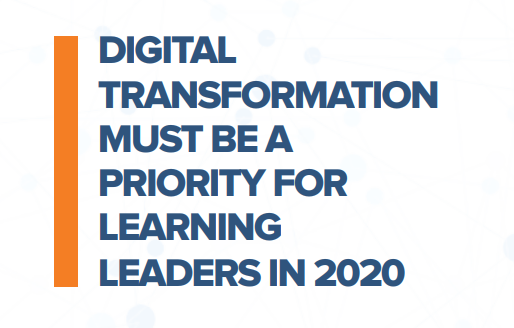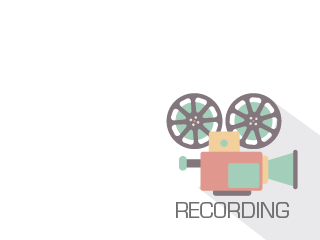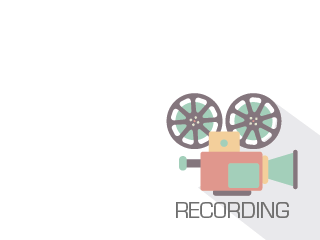All Resources

Becoming a Thought Leader on LinkedIn
Branding ourselves as thought leaders and subject matter experts is foundational to driving new business opportunities from LinkedIn.

How Mobile Learning Can Energize Your Sales Team During a Pandemic
Are you using mobile tech to train your sales reps? If not, you’re missing out on a huge opportunity.

What You Need to Know About Automation & Machine Learning for Your Learning Programs
The bots are coming and having borne witness to at least Six Terminator movies, you are understandably terrified. Not only are marketers ensuring you that these learned machines are going to automate your training so effectively that you may no longer need employees, but they have the gall to hide it all behind acronyms like AI/ML.

Digital Transformation Must Be A Priority for Learning Leaders In 2020
The beginning of a fiscal year is the ideal time to evaluate transformative ideas and a potential digital transformation strategy. An organization’s efforts to use technology to solve traditional problems is probably one of the most beneficial from a business perspective.
Digitally transformed organizations can improve their customers’ experience, elevate their brand reputation, adapt more quickly to rapidly changing technology, address sudden industry shifts, and more.

URGENT: Moving Presentations Online: Coronavirus, Training Sessions, and Events
Coronavirus is causing businesses to cut or make drastic reductions in business travel, and to cancel or move conferences and events online. But conference organizers, training teams, and trainers still have jobs to do - so the question immediately becomes How do you do your job when people can’t travel or meet face-to-face?

The 3 Pillars of an Effective Learning Program
Digital transformation is the name of the game, but how do you know if your current learning program is actually successful?

Using Assessment Tools to Coach
There are loads of assessment tools and strategies in the marketplace. All these platforms and tools provide organizations an awesome opportunity to build specific coaching solutions based on the results.

Friday the 13th? L&D has NO Fear
Join Lou Russell and her friends on Friday the 13th to prepare for 2020 (NOT the TV show...).

7 Story Learning Designs That Boost Engagement
Learning cannot be separated from stories. Learners understand lessons better and quicker through stories because they relate to the core of human experience. There are many methods leveraging the use of stories, but seven models have repeatedly shown results based on research. Furthermore, these models build on each other to deliver deeper engagement, learning and thinking capacities.

How to Prove the Value of Your Sales Training Program
You know an effective sales force is essential. Equipping your reps with product knowledge, best practices and objection handling are baseline skills. Well-trained salespeople drive better results. Yet only 42% of sales training programs meet expectations.

Create eLearning Courses in Minutes Using Quick Start Projects in Adobe Captivate
Your eLearning course storyboard is ready and you’re really proud of how it turned out. Your next task is to convert it to an eLearning course. You’ve spent a lot of time in making the storyboard instructionally sound and now left with no time to design the course interface and interactions. Ever found yourself struggling in such a situation?

Enabling Critical Skills: A Guide for Success
For talent leaders, critical skills are gaining momentum in the race to develop effective talent and business strategies. But the focus on employee skills isn't new. We still hear about talent shortages and skills gaps. More recently, the "soft skills" or behavioral skills that underpin long-term sustainability, leadership and agility are taking center stage.
In this eBook, Saba gathered stories from progressive companies that have successfully embedded critical skills to deliver organizational capabilities at scale and ensure employees can perform, innovate and grow in areas that are strategic to organizational success.
You'll gain insights into:
Reskilling to compete in times of growth and transformation
Tips for nurturing behavioral skills that support company values
How social learning and collaboration can help build critical skills
How to close skill gaps by linking performance, feedback and learning
Ready to learn more? Download this eBook and get inspired to develop and enable critical skills in your organization!

Care Like A Mouse. Engage Your Castomers™. Amaze Your Customers.
This session, based on the presenter’s book Care Like a Mouse, will show attendees how Disney harnesses human capital through Purpose, Priorities and People. At each step, we will share strategies and tactics participants can apply to their organization.

The Science of Employee Training: Learning Reinforcement
They say an elephant never forgets, but as humans we forget a startling 80% of what we learn within a week.
This phenomenon is called the forgetting curve, and it's a frustrating experience for training professionals who dedicate a lot of time and resources to training initiatives. But it's not just frustrating, it's also alarming to think that employees could be forgetting crucial information on topics like workplace safety or harassment. These gaps in knowledge leave you vulnerable to accidents, lawsuits, and fines. But there's a way to beat the forgetting curve! Learning reinforcement is the key to helping employees not only retain but also recall important information from training on the job. Quick recall exercises keep the concepts top of mind, which helps to prolong the impact of training in just a few minutes a day.
In this infographic, you'll learn why reinforcement is important for maximizing training efforts.
You'll also learn:
The most effective research-based learning reinforcement methods
The science behind the forgetting curve
How learning reinforcement helps you save on training costs in the long run

Beginners Essential: Getting Started with Adobe Captivate (2019 Release)
Are you a first time eLearning developer? Looking for some solid foundations to build your eLearning courses?

Becoming a Virtual Trainer Is a Hero’s Journey
The path to becoming a virtual trainer is a hero’s journey, one filled with adventure, challenges, disappointments, excitement, determination, and great success and achievement. Those who have forged ahead know the journey is often fraught with fears, foes, and failing audio connections. With challenges like confusing links and logins, participants unable to connect, and unexpected technical issues, it’s no easy feat to become a respected virtual trainer.

Your Blindspots Are Killing Your Coaching and Leadership
Mark Sellers wants you to know that you have blindspots that are killing your coaching and leadership.
In his new book, Blindspots: The Hidden Killer of Sales Coaching, sales coach, trainer and author (The Funnel Principle) Mark Sellers exposes a universal problem facing sales leaders - they all have blindspots. The fundamental problem with blindspots is they prevent leaders from creating emotional connections. As a result, leaders don’t get everything their people have to give, and performance and results are compromised.

Creating a Culture of Peak Performance Mindset
Mindset is the missing piece to grow and sustain performance. 80% of success is based on mindset; while only 20% is based on skillset. This webinar is designed to help us achieve higher levels of success by modeling and adopting the mindset of excellence. You will become highly aware of and be able to harness the power of your Inner CEO - the key center of the brain that regulates and improves what we do on a daily basis.
.pdf_-_Adobe_Acrobat_Reader_DC_2020-02-21_08.25.21.png?1582302347)
A Comprehensive Guide to Self-Paced vs. Instructor Led Training in 2020
Many organizations struggle with the decision on which training format is best for their developers. And many teams focus on testing out a self-paced training solution. Is it the best method? Can it help retain their teams? We sat down with the industry’s biggest leaders and asked for their honest feedback.
In this white paper, you will learn:
The outlook for self-paced training in 2020.
The cost considerations for various training formats.
If self-paced training can be the end all solution.
Training tips from some of the country’s biggest companies.

The New Coaching Revolution: Everyone Gets a Coach
Coaching is the most effective mechanism for accelerating human performance. So, why doesn’t everyone have a coach?

Super Easy Script Development for Webinars and Virtual Training
Have you felt at times that your webinars and virtual trainings are big guess work? You are hoping learners would not multi-task or snooze off or just remain so quite, Does it ever come to the point that you feel like you’re the only one in the webinar? This is a scary and eerie feeling. But it happens to many trainers and presenters.

Prime your Learning Culture with Social Learning
Creating a culture of learning within your organization is an ongoing process. No single technology can finger snap you from a culture that avoids learning to a culture that promotes and celebrates learning. There are however some technologies that can provide an architecture for your learning culture to grow more easily.

Every Job Is A Sales Job
The days of "sales" being assigned to just one individual or team are GONE---in a typical transaction in today's market, literally every member of your team may come into contact with a client or prospect. And every one of those moments is a selling opportunity...making EVERY job a sales job! Dr. Cindy McGovern will show you how to take the "ick" out of selling and adopt a new and energized sales mentality. Everyone in your organization is capable of playing a part in elevating the customer experience.

5 Steps to Ensure an Impactful Learning Strategy
When was the last time you examined the impact of your learning strategy? Use this evaluation tool to help determine which conclusion best describes your organization’s current learning program and what steps you can take to make improvements.











